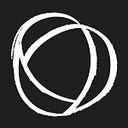Chewing the Fat: On Body Positivity (Holiday Edition)
In this third installment of Chewing the Fat, I would like to focus on the art of illustrator Tara O’Brien and her contributions to the body positive community. Her artist biography states that her work “explores people and other creatures of all shapes, sizes, colors, sexual orientations, and gender identities. I attempt to promote body positivity and self love within everyone and everything.” Her femme portraits emphasize the sexuality of the fat body and the ability to embrace both typical and atypical modes of expression, especially what is not supposed to be visible to the public, i.e., a fat woman enjoying herself, eating, and taking up space. The addition of food as a character on its own within many of her pieces drew me to Tara O’Brien’s work, which evokes a visceral response from me as a fat woman and particularly as a fat woman who has been schooled in more than one venue that I should never be seen eating. Apparently crudites are for looks if you’re at a party, folks.
It’s now deep in the holiday season for many of us and regardless of which holiday you’re celebrating there is most likely food involved. Any body issues are compounded with the added stress and perception of losing control that are a part of family gatherings, social pressure from one’s inner circle, and the presence of rich holiday treats or special dishes that are only made once a year. Therefore it’s the perfect time to discuss a HAES (Healthy at Every Size) approach to the holidays as well as spotlight an artist whose work focuses on bodies of all types and their relationship to food. As a self-described “fat femme” and as someone who celebrates Christmas, Yule, and the Winter Solstice, I’ve had some run-ins with desserts and the recurring New Year’s Resolution. With each year I’ve grown fatter and my resolutions have grown with me, first in ridiculous intensity and then in the sense of spiritual growth. Before I became a part of the body positive and HAES movements, each New Year brought with it a resolution to lose weight.
“This year I can be beautiful.”
“This year I can be a real person, one who people want to look at and be around.”
“This could be my year.”
My year to do what, exactly? To start living my life, to start feeling like a human being? Maybe to try my hand at being a “pretty girl,” one who could achieve desirability, likability, or at least some kind of attention. All these and more could be delivered by following through with my New Year’s Resolution — a year’s worth of impossible tasks that I neither needed nor actually wanted to accomplish. After applying the body positive/HAES lifestyle to my self and allowing myself to live a concept that I’d only imagined existed, I began to love myself in spite of my perceived flaws and failures, and then I began to love myself because of them.
Tara O’Brien’s illustrations exemplify this journey. Her art is whimsical, peppered with both simple and detailed pieces. As a cis-het woman, I’m expected (as per Western culture’s patriarchal dictates upheld by men, women, and the media) to fit into certain physical and social “norms.” O’Brien’s art calls these constructs into question.
The way O’Brien’s work brings food into conversation is especially pertinent to what many people are dealing with every day and with more intensity during the winter holiday season. There are holiday-themed acceptance pieces as well as pieces with food as a direct focus or character in its own right. I’d like to discuss a HAES piece by Lindsey Schumacher here, on the blog of the Association for Size Diversity and Health website. Her post is specifically about holiday deprivation in order to achieve an unattainable sense of control akin to the New Year’s Resolution that can be carried throughout the year. This policing mentality persists year-round and impedes life in ways unrelated to food consumption. Schumacher’s article “The HAES files: Eat, Drink, and Be Merry: A Very HAES Holiday” published December 8, 2016, focuses on the “deep paranoia” of letting go and enjoying food and other related activities.
Schumacher makes an excellent point in drawing our attention to the fact that restricting one’s self in an attempt to control food-based behaviors has direct consequences on other behaviors and personal relationships, as well as leading to a sense of distrust within one’s self. Chronicling her own experience with food and holidays, she senses “a fatalism that says that if we eat and drink what we like, it will inevitably lead to outright gluttony.” She discusses ubiquitous diet tips, most involving tactics that keep you from eating even a single item at any given holiday gathering and usually involve a severe lack of participation and enjoyment. A refusal of food at a holiday gathering is a denial of the relationship between guest and host as well as a kind of abjection of one’s culture, usually celebrated through certain holiday dishes.
Why?
Because the possibility of becoming fat is viewed as an inarguable negative. Being fat as a result of eating, read: as a result of enjoying one’s self, is viewed as some kind of societal evil, punishable by spinsterhood and a lifetime playing the butt of everyone’s jokes, which rely on the concept of an animalian lack of self-control attributed to people of size and especially to women of size who must not want any positive attention. After Schumacher found the HAES movement and employed intuitive eating habits, she found her own sense of control. She ends her piece with the statement,” I am not bound to a constrictive set of external rules; I am following my own internal cues. I am free.”
The concept of following internal cues is reflected in Tara O’Brien’s art, whether it is food-focused or femme-focused, or simply a depiction of animals exploring the world around them. These varied themes explore the facets of navigating the modern world as a person of size who is often treated like some kind of animal who cannot control themselves.
O’Brien’s illustrations highlight the visibility of the fat body. She can draw both silly and sexy without sacrificing the seriousness of her subject. The messages included with her pieces are epigrams of ownership, individuality, and unapologetic feeling which transcend pictures and touch viewers’ souls.
Being fat, femme, sexy and visible can be achieved …
… has been achieved. By me.
Which brings us back to the literal growth of my New Year’s Resolutions; they’ve become something more, in both scope and meaning. Previous resolutions involving spiritual or psychological growth (instead of focusing on the problem of physical growth) have included adding to my reading pile, adopting shelter animals, walking outside under the moonlight more often, writing more, and being authentic at all times. Keeping these resolutions has fostered internal growth, the kind of benevolent growth that is necessary for a happy and well-rounded (pun intended) life.

